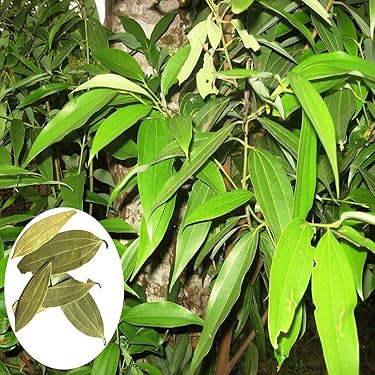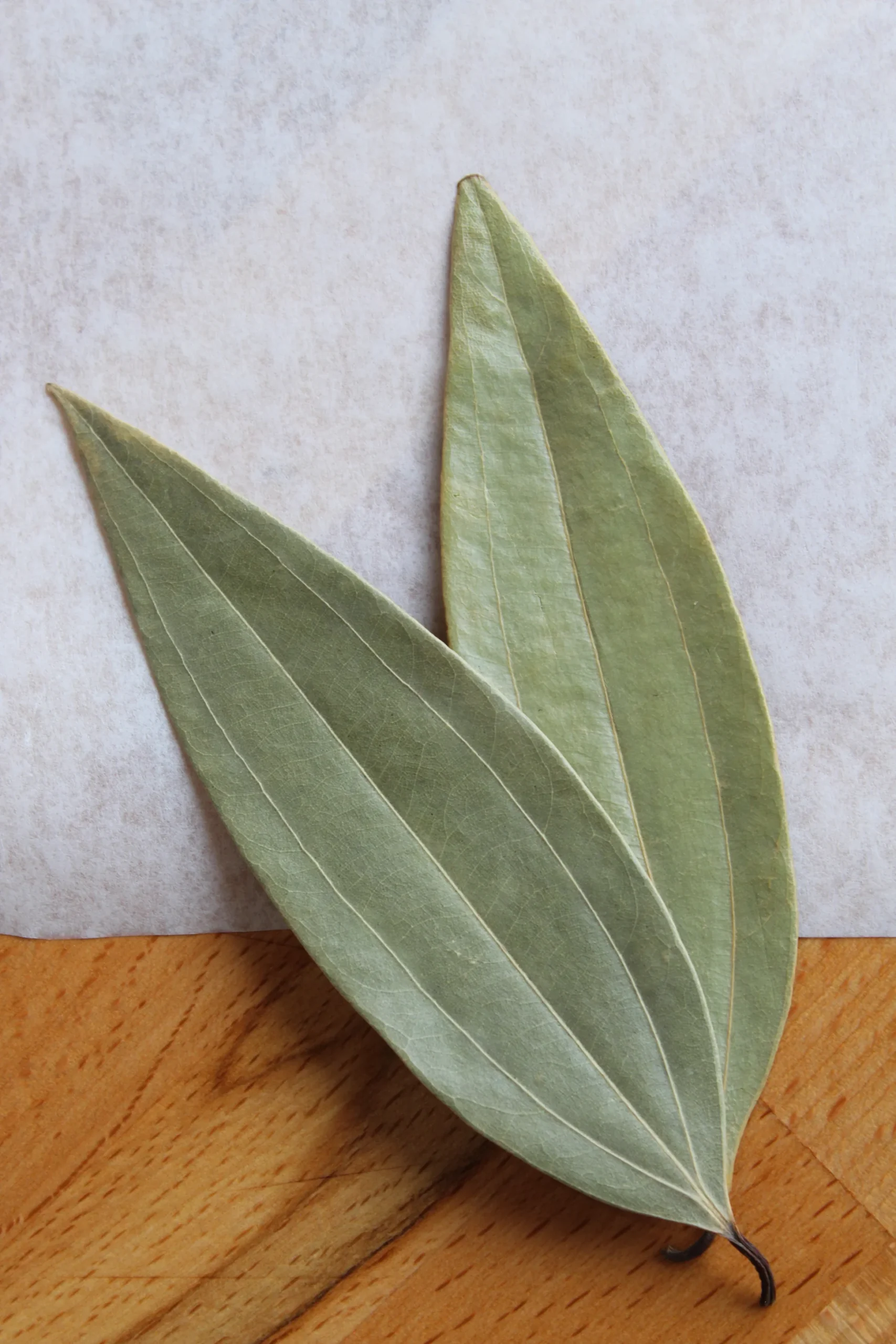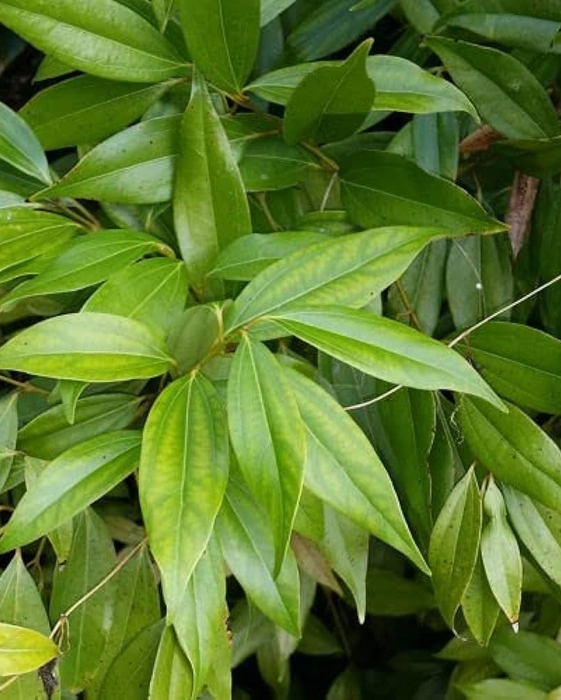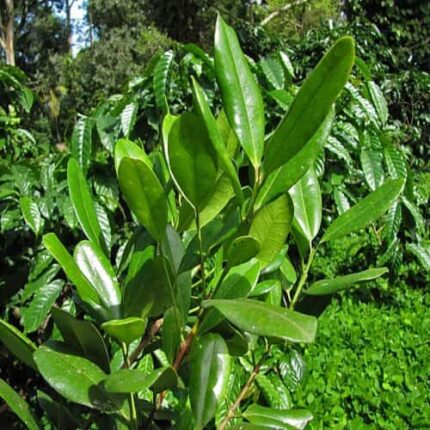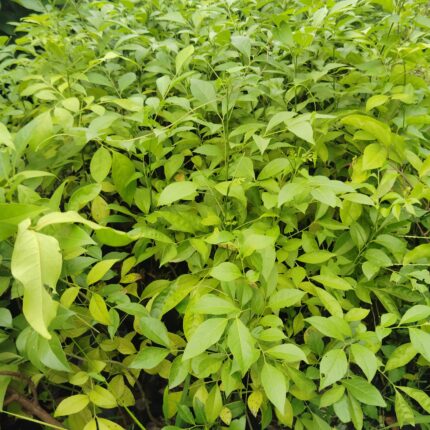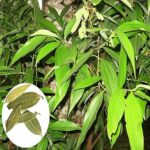
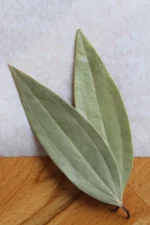
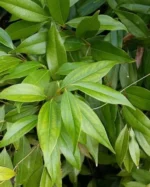
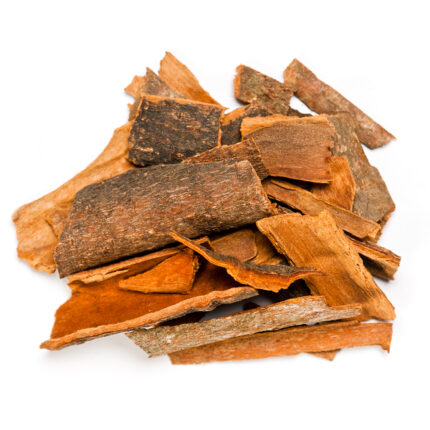
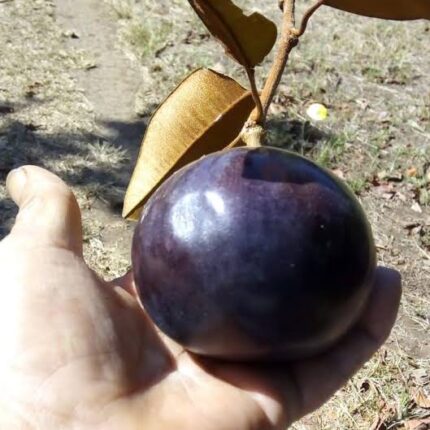
Tejpatta plants
₹599 Original price was: ₹599.₹399Current price is: ₹399.
“Tejpatta” (तेजपत्ता) is the Hindi name for Indian Bay Leaf, also known botanically as Cinnamomum tamala. It is a distinct spice that, while often confused with Mediterranean bay leaf (Laurus nobilis), is actually closely related to cinnamon and cassia, belonging to the same Cinnamomum genus.
Here’s a detailed description of the Tejpatta plant:
Botanical Name: Cinnamomum tamala (Buch.-Ham.) T. Nees & C.H. Eberm. Family: Lauraceae (Laurel family, which also includes cinnamon and avocado)
Plant Characteristics:
- Type: It is an evergreen, aromatic tree.
- Size: The Tejpatta tree is typically of medium size, generally growing to a height of 6 to 12 meters (20 to 40 feet), though it can sometimes reach up to 20 meters in the wild.
- Bark: The bark is usually rough, dark grey to reddish-brown in color, and can be somewhat brittle. Like cinnamon, the bark itself is also aromatic, though the leaves are the primary spice.
- Leaves (The Spice): This is the most commercially important part of the plant.
- Appearance: Tejpatta leaves are elongated, lance-shaped or oval, and typically range from 5 to 15 cm (2 to 6 inches) in length. They are a rich, dark green on the upper side and a lighter green on the underside. When fresh, they have a leathery texture. When dried, they turn an olive-brown color and become brittle.
- Distinctive Venation: A key distinguishing feature from Mediterranean bay leaves is the venation. Tejpatta leaves have three prominent veins that run lengthwise from the base to the tip, whereas Mediterranean bay leaves have only one central vein.
- Aroma and Flavor: When crushed or bruised, the leaves release a potent, warm, spicy, and slightly sweet aroma. Their flavor is often described as a blend of cinnamon, clove, and sometimes a hint of pepper or camphor. It is distinctly different from the more piney, citrusy, and somewhat bitter flavor of Mediterranean bay leaf.
- Flowers: The plant produces small, yellowish or greenish-white flowers that bloom in clusters. These are generally inconspicuous compared to the leaves.
- Fruit: The fruit is a small, round, single-seeded drupe that turns purple when ripe.
- Root System: It develops a robust root system, contributing to its hardiness.
Habitat and Cultivation:
- Native Range: Tejpatta is native to the Himalayan regions of northern India (including Assam and the Western Himalayas), Bangladesh, Nepal, Myanmar, Laos, Vietnam, and southwestern China.
- Climate: It thrives in tropical and subtropical climates, particularly at elevations between 300 and 2400 meters. It prefers warm, humid conditions.
- Soil: Grows best in fertile, well-drained loamy soil, but is quite adaptable to various soil conditions.
- Sunlight: Prefers partial to full sunlight, ideally with at least 4-6 hours of direct sun daily for optimal leaf production.
- Hardiness: It is a relatively hardy plant and generally resistant to most common pests and diseases.
Uses:
- Culinary: Tejpatta is a staple spice in North Indian cuisine, especially in dishes like biryanis, pulaos, curries, stews, and various gravies. It’s often used whole during cooking to infuse flavor and then removed before serving. It is also a common ingredient in many garam masala blends.
- Medicinal (Ayurveda): In traditional Ayurvedic medicine, Tejpatta is highly valued for its therapeutic properties. It’s traditionally used as a digestive aid, anti-inflammatory, antimicrobial, antioxidant, and for addressing respiratory issues, blood sugar regulation, and stress relief.
- Aromatic: Its strong aroma also makes it suitable for use in potpourri and essential oils.
In essence, the Tejpatta plant is a valuable aromatic tree primarily cultivated for its fragrant leaves, which impart a unique cinnamon-clove like flavor to a wide range of culinary dishes and are also prized for their traditional medicinal benefits

